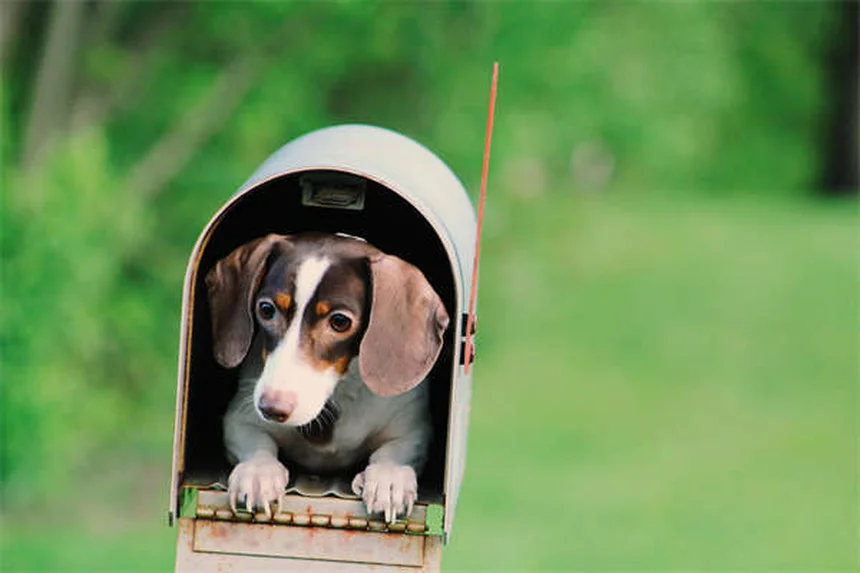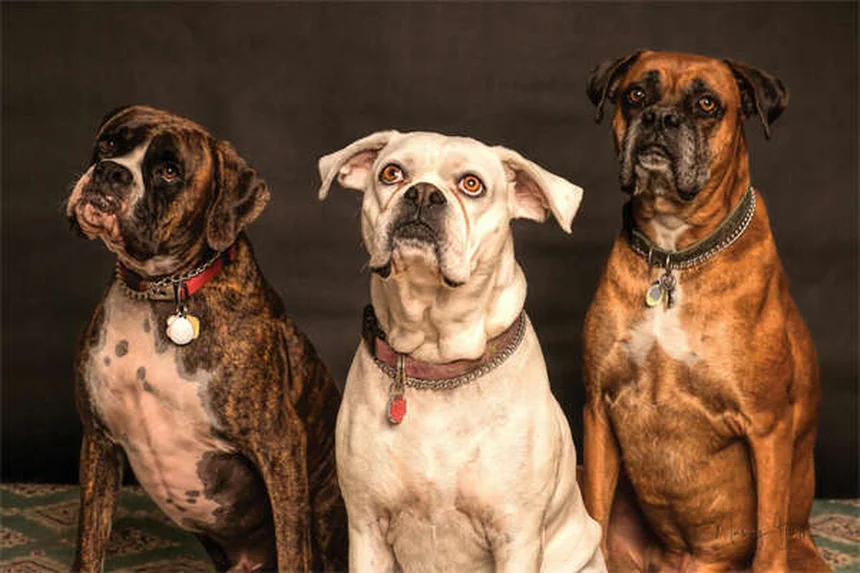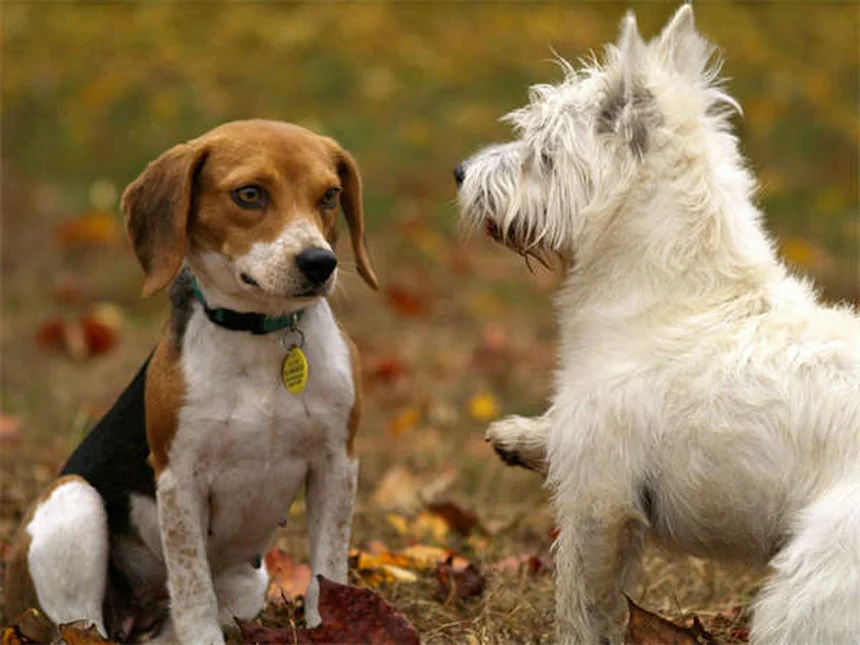19 Pet-Dangerous Beauty Products You Need to Know About
Are your beauty products putting your pets at risk? The answer is: Yes, many common beauty items can be seriously harmful to your furry friends. As a pet owner myself, I was shocked to discover how many everyday products in my bathroom could endanger my dog Max. From nail polish remover to hand sanitizer, these items we use daily contain chemicals that can cause anything from mild irritation to life-threatening poisoning in pets. What makes this especially dangerous is how pets interact with our stuff - they'll lick, chew, or rub against things we'd never consider putting in our mouths. Their smaller body size means even tiny amounts of certain ingredients can cause big problems. In this article, we'll walk through the 19 most dangerous beauty products you need to watch out for, and I'll share simple solutions that have worked for me to keep Max safe while still maintaining my personal care routine.
E.g. :How to Pet a Dog Properly: 5 Expert Tips for Safe Interactions
- 1、19 Beauty Products That Could Harm Your Pet
- 2、Top Dangerous Beauty Products
- 3、Common Household Items You Might Not Suspect
- 4、Products That Might Shock You
- 5、Simple Safety Tips
- 6、Final Thoughts
- 7、Alternatives That Keep Both You and Your Pet Safe
- 8、Understanding Pet Behavior Around Beauty Products
- 9、The Financial Impact of Pet-Safe Choices
- 10、Creating a Pet-Safe Beauty Routine
- 11、When to Consult Your Vet About Products
- 12、FAQs
19 Beauty Products That Could Harm Your Pet
By Helen Anne Travis
Hey pet parents! Did you know your beauty routine might be putting your furry friends at risk? I was shocked when I learned how many everyday items in my bathroom could actually be dangerous for my dog Max. Let's talk about this important issue in a way that's easy to understand and actually helpful.
Why Your Pet Might Be at Risk
You might not realize it, but pets explore the world very differently than we do. While we carefully apply products, our curious cats and dogs often lick, chew, or rub against things they shouldn't. Their smaller bodies mean even tiny amounts of certain ingredients can cause big problems.
Just last month, my neighbor's puppy got into her makeup bag and ended up at the emergency vet. That experience made me research this topic thoroughly, and I want to share what I've learned with you. We'll go through specific products to watch out for, but first, let's understand why these items are so risky.
How Pets Get Exposed
Pets encounter our beauty products in several ways:
- Sniffing or licking items left on counters
- Chewing on containers
- Rubbing against freshly applied products
- Drinking from glasses we've used for mouthwash
I've created this simple table to show how different exposure methods affect dogs versus cats:
| Exposure Method | Dogs | Cats |
|---|---|---|
| Ingestion | Very common (they'll eat anything!) | Less common but happens |
| Skin Contact | Moderate risk | Higher risk (groom themselves) |
| Inhalation | Low risk | High risk (sensitive respiratory systems) |
Top Dangerous Beauty Products
 Photos provided by pixabay
Photos provided by pixabay
1. Nail Polish and Remover
You might love your weekly manicure, but nail products are some of the most dangerous items for pets. The acetone in nail polish remover can cause serious problems if ingested, and even the fumes might irritate your pet's sensitive nose.
Last year, my friend's cat walked through wet nail polish and then licked her paws clean. The poor thing needed emergency care for poisoning. Now I always do my nails outside or in a well-ventilated room with the door closed, and I wipe up any spills immediately with paper towels that go straight in the outside trash.
2. Hair Dye and Bleach
These products contain harsh chemicals that can burn your pet's skin or cause poisoning if ingested. Even the residual dye left on your hair after coloring can transfer to your pet when they cuddle with you.
Did you know that some pets have actually died from licking hair dye off their owners' hair? That's why I now wait at least 48 hours after coloring before letting Max snuggle up to me. I also store all my hair products in a locked cabinet - better safe than sorry!
Common Household Items You Might Not Suspect
3. Hand Sanitizer
With everyone using more hand sanitizer these days, this is a growing concern. The high alcohol content can cause alcohol poisoning in pets, especially small dogs and cats.
Here's something that might surprise you: just a teaspoon of hand sanitizer could make a small dog seriously ill. I've started keeping my sanitizer in my purse instead of on the counter, and I'm careful not to pet Max until my hands are completely dry.
 Photos provided by pixabay
Photos provided by pixabay
1. Nail Polish and Remover
While many people think essential oils are natural and therefore safe, several types are actually toxic to pets. Tea tree oil, for example, can cause weakness, vomiting, and even coma in dogs.
I used to diffuse oils in my home until I learned how dangerous they can be for pets. Now I only use them in rooms where Max isn't allowed, and I always research each oil thoroughly before bringing it into our home.
Products That Might Shock You
5. Sunscreen
Wait - isn't sunscreen supposed to protect us? Yes, but the zinc oxide in many sunscreens can be toxic if pets lick it off your skin. Some sunscreens also contain other ingredients that are harmful if ingested.
Now I apply sunscreen outside where Max can't reach me, and I wash my hands thoroughly before petting him. If we're going to the beach together, I use a pet-safe sunscreen on myself when possible.
6. Toothpaste
Human toothpaste often contains xylitol, an artificial sweetener that's extremely toxic to dogs. Even small amounts can cause liver failure.
This one really scared me because I sometimes let Max lick the last bit of toothpaste off my finger after brushing. Never again! Now I use pet-safe toothpaste for both of us - they make some great options that clean human teeth just as well.
Simple Safety Tips
 Photos provided by pixabay
Photos provided by pixabay
1. Nail Polish and Remover
Keeping your beauty products secure doesn't have to be complicated. Here's what works for me:
- Use containers with child-proof lids
- Store items in high cabinets or locked drawers
- Keep purses and bags with products inside closed and out of reach
- Consider a separate bathroom for applying products
I installed simple child locks on my bathroom cabinets for under $10, and it gives me peace of mind knowing Max can't get into anything dangerous.
What to Do If Exposure Happens
Accidents happen, so it's important to be prepared. Keep these numbers handy:
- Your vet's emergency line
- ASPCA Animal Poison Control Center: (888) 426-4435
- Pet Poison Helpline: (855) 764-7661
Remember, it's always better to call and ask rather than wait if you think your pet might have gotten into something. I have these numbers saved in my phone and posted on my fridge - you should too!
Final Thoughts
Being a pet owner means making some adjustments to keep our furry family members safe. I've learned that with a little awareness and some simple changes, we can enjoy our beauty routines without putting our pets at risk.
What's one change you'll make today to pet-proof your beauty products? For me, it was switching to pet-safe alternatives whenever possible. Your pets will thank you for taking these precautions!
Alternatives That Keep Both You and Your Pet Safe
Pet-Friendly Beauty Brands Worth Trying
Guess what? You don't have to choose between looking good and keeping your pet safe! Several companies now make beauty products specifically formulated to be pet-friendly. I recently discovered BarkCare and PawSafe Cosmetics, two brands that completely changed my beauty routine.
After Max had a scare with my regular shampoo, I switched to these alternatives and noticed something amazing - not only are they safer for him, but my hair actually looks better! The formulas avoid harsh chemicals while still delivering great results. My stylist couldn't believe I was using "pet-safe" products when she saw how shiny my hair looked at my last appointment.
DIY Solutions You Can Make at Home
If you're the crafty type like me, you'll love this - many beauty treatments can be made with simple kitchen ingredients that are completely safe for pets. My favorite? A honey and oatmeal face mask that leaves my skin glowing while being totally harmless if Max decides to give me a lick (which he always does!).
Here's my go-to recipe that costs pennies compared to store-bought masks: mix 2 tablespoons of plain oatmeal, 1 tablespoon of raw honey, and a teaspoon of coconut oil. Apply for 15 minutes while cuddling your pet worry-free! The best part? If any drops on the floor, it's actually a tasty treat for your dog (though I still try to avoid this).
Understanding Pet Behavior Around Beauty Products
Why Pets Are Drawn to Certain Scents
Ever wonder why your cat rubs against your freshly moisturized legs or your dog tries to lick your face after you apply lip balm? There's actually science behind this behavior! Animals are attracted to certain scents that remind them of food or pheromones.
I learned from my vet that coconut oil smells similar to some animal fats in prey, which explains why Max goes crazy when I use my coconut shampoo. This knowledge helped me choose products with less appealing scents for pets, like tea or lavender (the safe varieties!), for areas they frequently contact.
Training Pets to Avoid Beauty Areas
Here's a game-changer I discovered - you can actually train your pets to stay away from your beauty routine spaces! It took about two weeks of consistent training, but now Max knows to stay out of the bathroom when I'm doing my makeup.
The trick? Positive reinforcement with treats when they obey the "stay" command outside the bathroom door. I started with just 5-minute sessions and gradually increased the time. Now I can do my full routine without worrying about him getting into anything. Who knew pets could learn beauty boundaries?
The Financial Impact of Pet-Safe Choices
Comparing Costs: Emergency Vet vs. Prevention
Let's talk dollars and sense - preventing pet exposure to harmful beauty products can save you thousands in emergency vet bills. When my neighbor's dog ate her lipstick, the vet visit cost over $800! Compare that to the $20 I spent on child-proof locks for my cabinets.
Check out this eye-opening comparison:
| Prevention Method | Cost | Potential Vet Bill |
|---|---|---|
| Child-proof locks | $10-$20 | $300-$800 |
| Pet-safe products | $5-$15 more per item | $500-$2000 |
| Separate application space | Free (use existing room) | $300-$500 |
Insurance Considerations for Pet Owners
Did you know some pet insurance policies actually give discounts if you use pet-safe household products? After switching to safer alternatives, I submitted proof to my insurance provider and got a 5% discount on my premium!
It's worth calling your provider to ask about such benefits. Many companies recognize that prevention leads to fewer claims, so they're happy to reward responsible pet parents. That discount now covers the extra cost of my pet-safe shampoo - talk about a win-win!
Creating a Pet-Safe Beauty Routine
Morning Routine Adjustments
My mornings used to be a stressful dance of keeping Max away while I got ready. Now? Smooth sailing with these simple changes. I do my skincare first thing after waking, before letting Max out of his crate. By the time he's had his breakfast and potty break, any products have fully absorbed.
For makeup, I've created a "pet-free zone" at my vanity with a small gate. It's not that I don't love Max's company, but this ensures he can't accidentally knock over my foundation or chew on a makeup brush. The best part? I'm actually ready faster now without the constant interruptions!
Nighttime Routine Tweaks
Nighttime was trickier since Max likes to cuddle while I remove my makeup. My solution? I now use micellar water on reusable cotton pads instead of liquid removers. They're less messy and don't leave residue that might tempt Max to lick my face.
I also switched to a toothpaste that's safe for both of us (yes, they make those!). Now when Max gives me goodnight kisses, I don't panic about toothpaste residue. Small changes like these have made our bedtime routine much more relaxing for both of us.
When to Consult Your Vet About Products
Signs Your Pet May Have Been Exposed
How can you tell if your pet has gotten into something they shouldn't have? Watch for these warning signs: excessive drooling, pawing at the mouth, vomiting, or unusual lethargy. I once noticed Max acting strangely after I used a new hairspray - turns out he was sensitive to the fumes!
Here's a pro tip: take photos of your product labels before calling the vet. When I had to call about a potential exposure, having the ingredient list ready helped the vet give immediate advice. This simple step could save precious time in an emergency.
Building a Relationship With Your Vet
Did you know you can schedule a "product safety consult" with many vets? I did this last year, bringing in all my frequently used beauty items. My vet reviewed them and gave personalized advice - turns out three of my products needed to go!
This one-hour visit cost about the same as a regular check-up but gave me peace of mind for my entire beauty routine. Now I do this annually when new products hit the market. Your vet wants to help prevent emergencies, not just treat them!
E.g. :19 Beauty Products That Could Harm Your Pet | PetMD
FAQs
Q: What beauty products are most toxic to pets?
A: The most dangerous beauty products for pets include nail polish remover, hair dye, hand sanitizer, and certain essential oils like tea tree oil. These contain chemicals that can cause serious health issues if ingested or even just through skin contact. For example, the acetone in nail polish remover can lead to poisoning, while xylitol in human toothpaste can cause liver failure in dogs. I learned this the hard way when my neighbor's puppy got into her makeup bag - the emergency vet bill was over $1,000! That's why I now store all my beauty products in locked cabinets.
Q: How do pets typically get exposed to harmful beauty products?
A: Pets usually encounter dangerous beauty products in four main ways: licking items left on counters, chewing on containers, rubbing against freshly applied products, or drinking from glasses used for mouthwash. Cats are especially at risk because they groom themselves constantly - anything that gets on their fur ends up in their system. My cat once walked through wet nail polish and then licked her paws clean, requiring emergency care. Now I'm extra careful to clean up spills immediately and keep my beauty routine separate from my pets.
Q: What should I do if my pet ingests a beauty product?
A: If you suspect your pet has ingested a beauty product, act immediately. Call your vet or the ASPCA Animal Poison Control Center at (888) 426-4435 right away. Don't wait for symptoms to appear - some toxins work very quickly. I keep these numbers saved in my phone and posted on my fridge. When my dog once got into my hand sanitizer, the poison control experts walked me through exactly what to do until we could get to the vet. Quick action made all the difference in his recovery.
Q: Are there pet-safe alternatives to common beauty products?
A: Absolutely! Many companies now make pet-friendly versions of popular beauty items. For example, you can find toothpastes without xylitol, sunscreens without zinc oxide, and even nail polishes with safer formulas. I've switched to using these alternatives whenever possible - they work just as well for me and give me peace of mind about Max's safety. Some of my favorites are brands like Earth Rated and Burt's Bees pet care lines. The small price difference is worth it to protect my furry family member.
Q: How can I safely store beauty products with pets in the house?
A: The best storage solutions I've found include using child-proof containers, keeping items in high cabinets, and installing simple child locks on bathroom drawers (they cost under $10 at any hardware store). I also make sure to immediately put away products after use and never leave them on counters where curious pets can reach. My pro tip? Designate one bathroom as your "beauty zone" where pets aren't allowed - this has been a game-changer for keeping Max safe while still maintaining my personal care routine.







